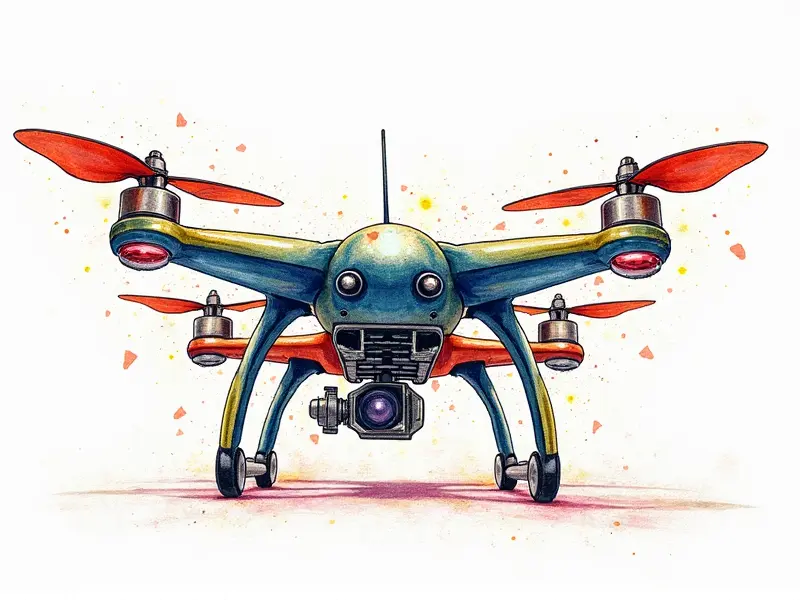What’s FPV racing?

FPV Racing: The Thrill of Drone Speed
First-person view (FPV) racing is an exhilarating sport that combines the excitement of high-speed drone flight with the adrenaline rush of competitive racing. FPV racing involves flying small, agile drones equipped with cameras and video transmitters to provide a first-person perspective from the drone's point of view. This immersive experience allows pilots to navigate through challenging courses at breakneck speeds, making it one of the fastest-growing hobbies in the world.
Why FPV Racing Is So Popular
The popularity of FPV racing can be attributed to several factors:
- Accessibility: With advancements in technology and a decrease in equipment costs, more people than ever before can participate in FPV racing.
- Excitement: The thrill of flying at high speeds through complex courses is unmatched by any other hobby or sport.
- Community: A vibrant and supportive community of enthusiasts provides resources, tips, and camaraderie for beginners and experienced pilots alike.
Getting Started with FPV Racing
For those interested in entering the world of FPV racing, here are some essential steps to get started:
- Research: Learn about different types of drones and equipment used for FPV racing.
- Purchase Gear: Invest in a quality drone, goggles, transmitter, and other necessary accessories.
- Practice: Spend time flying your drone in safe environments to get comfortable with the controls and camera setup.
FPV Racing: Gear and Setup Tips
Selecting the right gear is crucial for a successful FPV racing experience. Here are some tips:
- Drones: Choose a drone with high agility, speed, and durability.
- Goggles: Invest in high-quality goggles that provide clear, lag-free video transmission.
- Transmitters: Ensure your transmitter has a reliable signal for uninterrupted flight control.
FPV Racing: Rules and Regulations
To ensure fair competition and safety, FPV racing follows specific rules and regulations. These include:
- Safety Protocols: Pilots must adhere to safety guidelines to prevent accidents.
- Course Specifications: Courses are designed with specific dimensions and obstacles to challenge pilots.
- Competition Rules: Clear rules regarding race conduct, penalties for violations, and scoring systems are established.
FPV Racing: Techniques for Success
Mastery of certain techniques can significantly enhance your performance in FPV racing. Some key techniques include:
- Turning: Master sharp turns to navigate tight corners efficiently.
- Avoiding Obstacles: Learn how to quickly assess and avoid obstacles while maintaining high speeds.
- Course Planning: Develop strategies for navigating through complex courses with speed and precision.
Introduction to FPV Racing Drones
FPV racing drones are specially designed for the sport, featuring lightweight frames, powerful motors, and high-resolution cameras. These drones can reach speeds of over 100 mph (160 km/h) and perform agile maneuvers that make them ideal for competitive racing.
What You Need for FPV Drone Racing
To get started with FPV drone racing, you will need the following equipment:
- Drones: Choose a high-performance racing drone suitable for your skill level.
- Goggles: Invest in comfortable and reliable goggles that provide clear video transmission.
- Transmitters: Ensure your transmitter offers responsive controls and a stable signal.
FPV Racing: Fast, Fun, and Exciting!
The fast-paced nature of FPV racing makes it an incredibly fun and exhilarating activity. Whether you're flying solo or competing in races, the thrill of navigating through challenging courses at high speeds is unmatched.
FPV Racing: From Beginner to Pro
Moving from a beginner to a professional FPV racer requires dedication, practice, and continuous learning:
- Practice Regularly: Consistent training is key to improving your skills.
- Watch Tutorials: Learn from experienced pilots through online tutorials and videos.
- Participate in Races: Gain experience by competing in local races and events.
FPV Racing: Speed and Strategy
In FPV racing, speed is crucial but so is strategy. Pilots must balance the need for quick navigation with careful planning to avoid obstacles and take optimal paths through courses:
- Speed: Push your drone's capabilities to achieve high speeds.
- Strategy: Develop plans that maximize efficiency and minimize risks.
Conclusion
FPV racing is an exhilarating sport that offers a unique blend of speed, strategy, and community engagement. Whether you're just starting out or aiming to become a professional racer, the thrill of flying at high speeds through challenging courses is unmatched. With the right gear, techniques, and dedication, anyone can experience the excitement of FPV racing.

